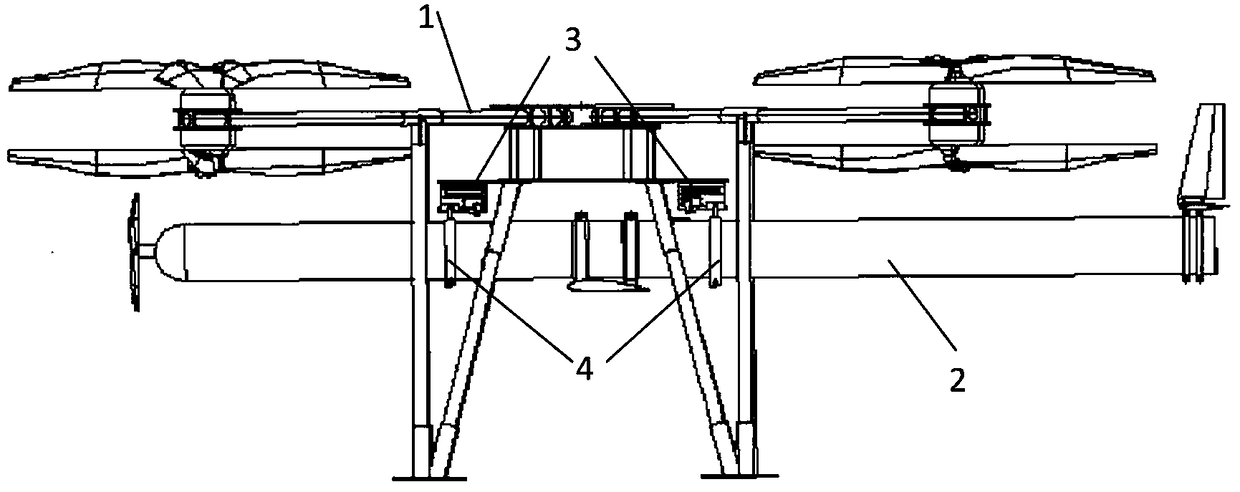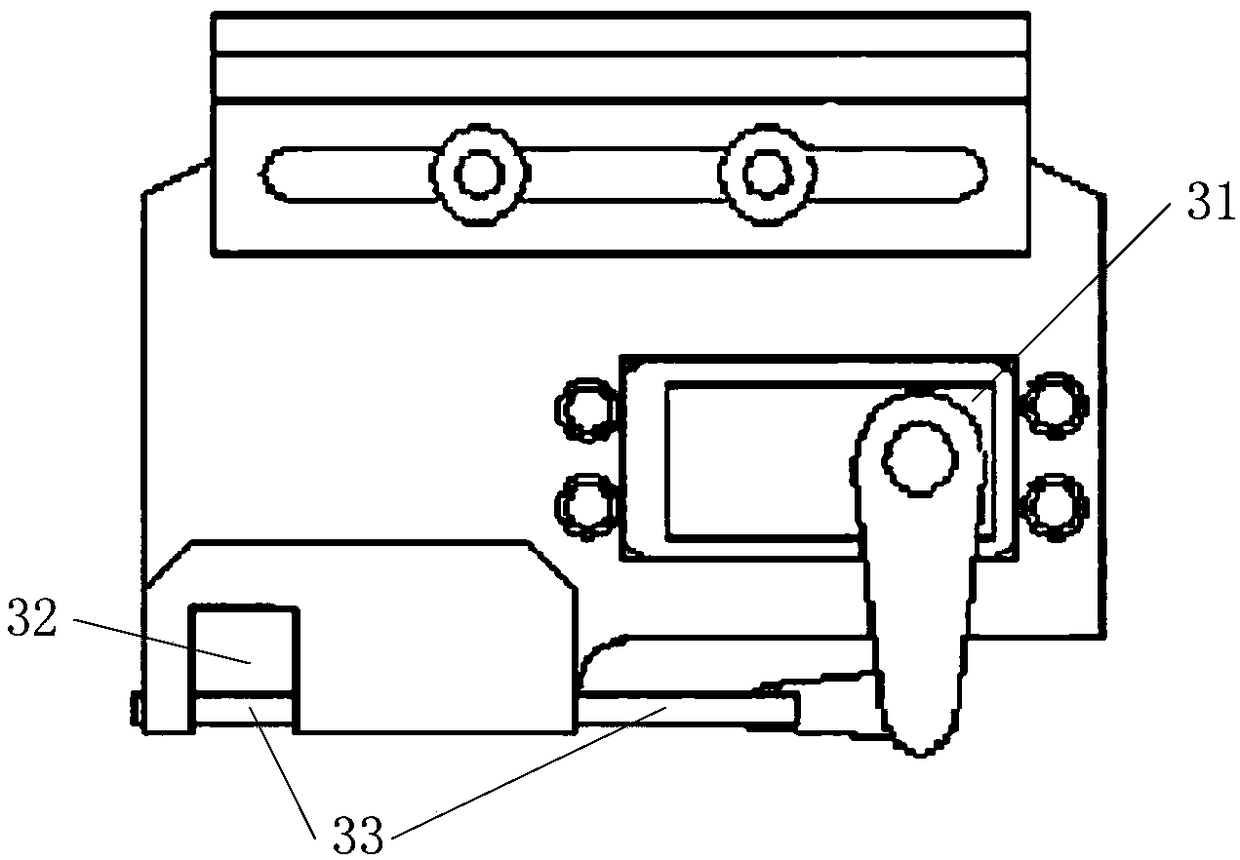Vertical take-off assist system for fixed-wing aircraft
A vertical take-off and auxiliary system technology, applied in the field of unmanned aerial vehicles, can solve the problems of limiting the maximum take-off weight, reducing propeller efficiency, and reducing the voyage, so as to achieve the effect of increasing the maximum take-off weight, reducing the system weight, and improving the flight time
- Summary
- Abstract
- Description
- Claims
- Application Information
AI Technical Summary
Problems solved by technology
Method used
Image
Examples
Embodiment Construction
[0027] The following will clearly and completely describe the technical solutions in the embodiments of the present invention with reference to the accompanying drawings in the embodiments of the present invention. Obviously, the described embodiments are only some, not all, embodiments of the present invention. Based on the embodiments of the present invention, all other embodiments obtained by persons of ordinary skill in the art without making creative efforts belong to the protection scope of the present invention.
[0028] Such as figure 1 Shown, a kind of vertical take-off auxiliary system of fixed-wing aircraft, comprises multi-rotor aircraft 1 and fixed-wing aircraft 2; Several suspension parts 4 are installed; the suspension part 4 is connected with the delivery device 3 in a suspension mode, so that the fixed-wing aircraft 2 is mounted below the multi-axis rotor aircraft 1; the multi-axis rotor aircraft 1 carries the fixed-wing aircraft 2 and takes off vertically to ...
PUM
 Login to View More
Login to View More Abstract
Description
Claims
Application Information
 Login to View More
Login to View More - R&D
- Intellectual Property
- Life Sciences
- Materials
- Tech Scout
- Unparalleled Data Quality
- Higher Quality Content
- 60% Fewer Hallucinations
Browse by: Latest US Patents, China's latest patents, Technical Efficacy Thesaurus, Application Domain, Technology Topic, Popular Technical Reports.
© 2025 PatSnap. All rights reserved.Legal|Privacy policy|Modern Slavery Act Transparency Statement|Sitemap|About US| Contact US: help@patsnap.com



